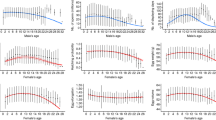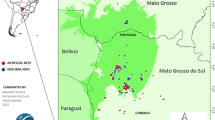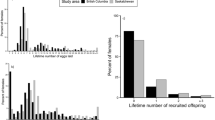Abstract
I DOUBT if it is possible from Dr. Perrins's results to convince the sceptic that swifts are “producing as many surviving young as possible”, and to demonstrate in this way that natural selection has, as he believes, forced their fecundity up to the potential limit of efficiency. A second look at the figures soon puts the conclusion in doubt. I agree that in England clutches of four tend to be inefficient; they constitute a relatively infrequent group, although they seem to have been commoner in 1958–61 than they were in the 1946–56 period5,6. Setting them aside we cannot be far wrong in assuming (having combined Perrins's samples for 1958–61 with those of Lack and Lack6 for 1946–51) that the remaining swifts breeding in the Oxford neighbourhood in recent years have produced clutches of one, two or three chicks in a percentage ratio of about 24 : 61 : 15. Two-chick broods have evidently been by far the most common.
This is a preview of subscription content, access via your institution
Access options
Subscribe to this journal
Receive 51 print issues and online access
$199.00 per year
only $3.90 per issue
Buy this article
- Purchase on Springer Link
- Instant access to full article PDF
Prices may be subject to local taxes which are calculated during checkout
Similar content being viewed by others
References
Weitnauer, E., Orn. Beobachter, 44, 146 (1947).
Lack, D., Swifts in a Tower, 190 (Oxford, 1956).
Jenkins, D., Watson, A., and Miller, G. R., J. Anim. Ecol., 32, 347 (1963).
Author information
Authors and Affiliations
Rights and permissions
About this article
Cite this article
WYNNE-EDWARDS, V. Survival of Young Swifts in Relation to Brood-size. Nature 201, 1148–1149 (1964). https://doi.org/10.1038/2011148a0
Issue Date:
DOI: https://doi.org/10.1038/2011148a0
This article is cited by
-
Significance of Clutch-size in Swift and Grouse
Nature (1964)
Comments
By submitting a comment you agree to abide by our Terms and Community Guidelines. If you find something abusive or that does not comply with our terms or guidelines please flag it as inappropriate.



